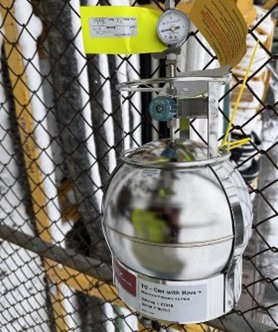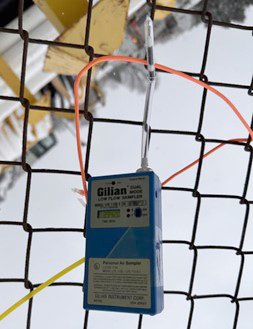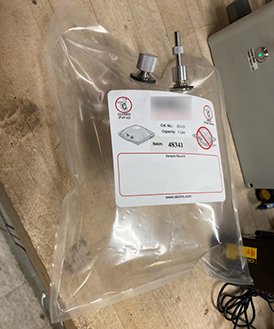Air Sampling Data

The Data Flow diagram shows what happens to a sample after it’s collected in order to get to final results that can be used for decision making. After a sample is collected, it is sent to a laboratory for analysis. Preliminary results become available from the lab after analyzing it. If the client requests it (EPA has), the lab will share these "draft" results. The results are then reviewed internally at the lab and when that is done, final results are reported out from the laboratory. The final results go for review and validation by an independent group to perform additional quality control/quality assurance checks. After these steps are complete, EPA has data of known and documented quality that is used to help make decisions. The final results are also shared publicly.
Air Sampling
In response to the East Palestine train derailment, EPA is collecting outdoor air samples for potential contaminants of concern including volatile organic compounds (VOCs) such as vinyl chloride, n-butyl acrylate, and 2-ethylhexyl acrylate.
Air sampling involves collection of air for laboratory analysis. The purpose of air sampling is to measure how much of a specific contaminant is present in the air over a period of time. For this response, samples are collected over time periods ranging from 4 to 24 hours and are submitted to a laboratory for analysis.
Air Sampling Collection
EPA and Norfolk Southern and their contractors have collected air samples using the following:

Canisters are used to collect samples for VOCs. The canister is a 6-liter metal canister with an air flow restrictor to make sure the air enters the canister slowly over a period of 24 hours. The canister is then sent to a lab for analysis of the air inside.

Sorbent tubes are used to collect acrylate samples. A pump is used to pull a known amount of air through a glass tube. The contaminant will stick to the inside of the tube. The laboratory then measures how much of the chemical of interest was captured in the tube.

Badges are used to sample for butyl acrylate. The rectangular sample media “badge” is a sorbent material where individual chemicals stick onto it from the air. Badges are used to sample for a period of 24 hours. The badge is then sent to a lab for analysis.

Bags are used to collect air samples for vinyl chloride and n-butyl acrylate. A pump is used to pull a known amount of air into the bag, which is then sent to a lab for analysis of the air inside.
Click the Show User Guide button (blue button to the right) for tips on using the dashboard.
Note: The U.S. Environmental Protection Agency is releasing preliminary and some final air sampling results from East Palestine as they become available. Preliminary data should be considered raw, unprocessed information.
Download and review air sampling data in CSV format: EPA Lab Results: Air (through 12/04/2024) - East Palestine, OH Response (csv)
